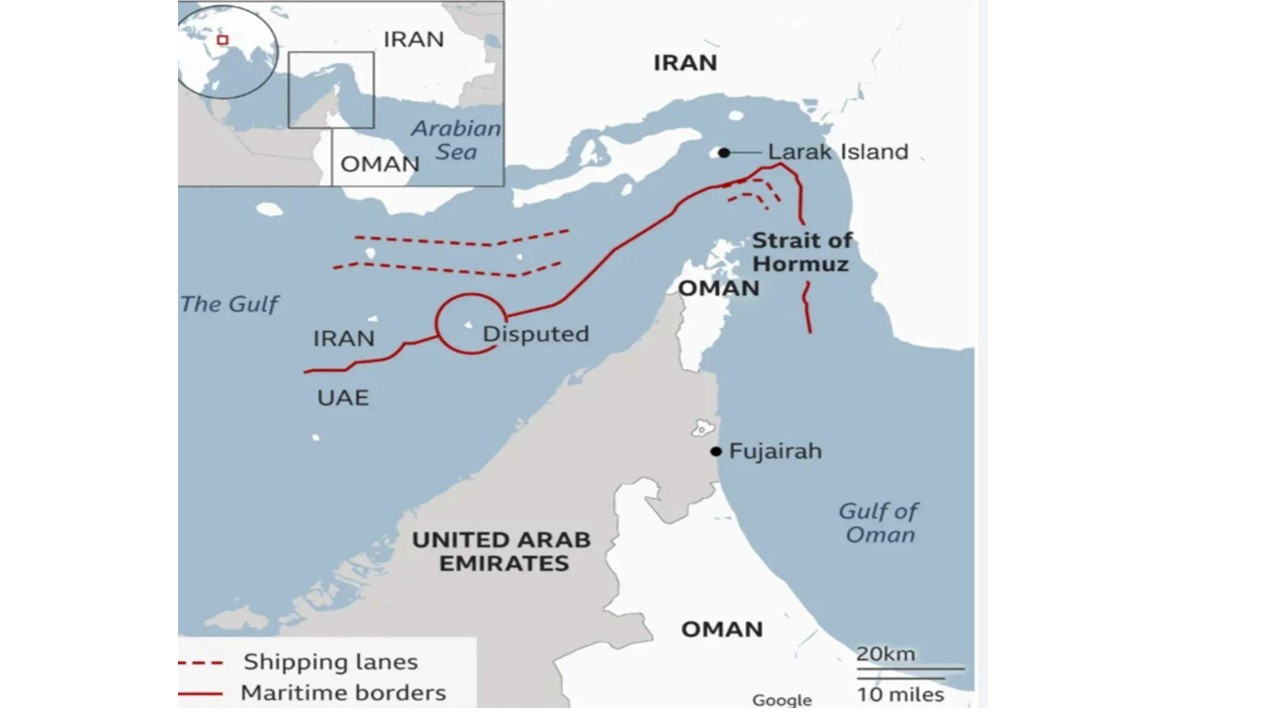Iran: Measured Next Steps?
A measured or modest Iran retaliation could be used by the U.S. to seek a path back towards negotiation. Israel would likely want to continue to degrade Iran nuclear and military facilities, but the U.S. could eventually pressure Israel to stop. This is our baseline, though the military attacks could now drag on for a number of weeks rather than subduing by early July. However, a circa 25-35% probability exists that Iran response could be too large and drag the U.S. into a more prolonged war.
Financial markets have not seen a major reaction to the U.S. attack on Iran’s nuclear facilities. What will happen next?
Figure 1: Straits of Hormuz

Source: BBC
The U.S. attack on Iran’s nuclear facilities raises a number of questions of what next in the current crisis. Key points include
· Iran’s retaliation. Iran has vowed retaliation against the U.S. attacks. However, a large-scale attack on the U.S. military is unlikely, both as Iran’s military has depleted resources (only 40-50% missile stocks after attacks on Israel) and as a major attack on the U.S. would likely see a big response from the U.S. A major exercise to close the Straits of Hormuz (Figure 1) is also unlikely, both given Iran strained resources and China’s pressure to avoid a super spike in oil prices. This tends to argue for a measured response. One option is pre announced attack (to try to avoid the loss of life) on U.S. military infrastructure in the Middle East like 2020. A 2 option is an attack on an oil tanker in the Straits of Hormuz to cause a temporary spike in oil prices and pressure Trump via U.S. voters concern on gasoline prices. A 3 option is to wait for 6 months and attack the U.S. via a proxy or terrorist activity.
· Trump declares victory. President Donald Trump has already declared victory in the media war and in reality, Iran nuclear program has been severely impacted by Israel in the past few weeks before then U.S. attack. A prolonged U.S. involvement or persistently higher gasoline prices for U.S. voters would hurt Trump politically. It could consume Trump’s bandwidth and slow other Trump issues, such as trade deals. This means that a measured or modest Iran retaliation could be used by the U.S. to seek a path back towards negotiation. Israel would likely want to continue to degrade Iran’s nuclear and military facilities, but the U.S. could eventually pressure Israel to stop. This is our baseline, though the military attacks could now drag on for a number of weeks rather than subduing by early July. However, a circa 25-35% probability exists that Iran’s response could be too large and drag the U.S. into a more prolonged war. Alternatively, Israel could decide to carry on despite U.S. pressure and escalate e.g. a limited airborne invasion to further damage Iran nuclear facilities.
· Markets. Financial markets’ limited reaction reflects the expectations that Iran’s response will be measured and the U.S. will seek to limit its involvement. However, even a one-off attack on an oil tanker in the Straits of Hormuz could cause oil market tensions and a further USD10 rally in oil prices. The alternative scenarios are more costly, with persistent attacks on shipping causing a more persistent risk premia in oil prices.